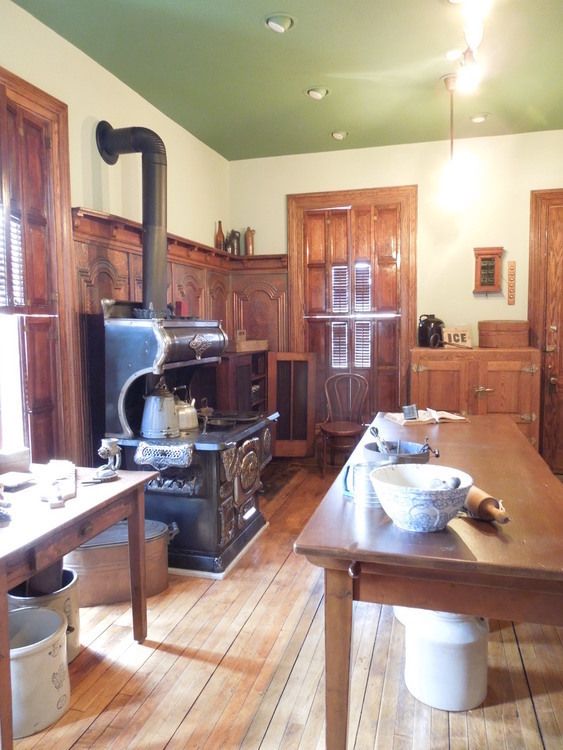


Kitchen
The kitchen is large, well lit, with both electric and natural lighting, and well equipped.
However, it has none of the decorative elements found on the family side of the house. This room is not about form but rather function.
The servant areas of the house were designed for work and were never shown to guests. This room features plain woodwork, a simple pine floor, lower ceiling, and functional rather than decorative lighting fixtures. Instead of using Bergmann fixtures, these are from the 1903 Sears and Roebuck catalogue. Upper class families like the Rogers did not spend money on their servants.
This was the domain of the cook. The cook in this house was well paid, earning a dollar a week in 1882. If we use the Van Strattum conversion, with 52 weeks in the year, she is being paid the equivalent of $52,000 in today's money. Median income in Wisconsin this year is $54,000 so the cook is right there. Plus she gets free room and board.
The cook was the most important position in the house as well-prepared meals were essential. The cook’s day started at four in the morning with lighting the stove with wood from the wood box and did not end until late at night. She worked 16 to 18 hours a day, seven days a week. Because of her long hours, the cook slept upstairs in a small, simple bedroom which we will visit. Despite the long days, being a cook was a covetted job.
Importantly, the cook was the top of the servant hierarchy in this house. She ran the house for the Rogers family.
The lowest in the pecking order was the scullery maid, typically a six year old girl, who had all the dirty jobs in the house. This included cleaning fowl and fish as well as butchering meat. She would also wash the pots and pans. The scullery maid and other servants - there typically were three to four "day" servants such as parlor maids and chamber maids working here in the 1880s - came in each day from their own homes to work and returned at night. The day servants would serve, clean, make the beds, do laundry, and other necessary jobs.
Importantly, the strict social structure and conventions of the day meant that the servants could only use the kitchen door to enter and leave the house.